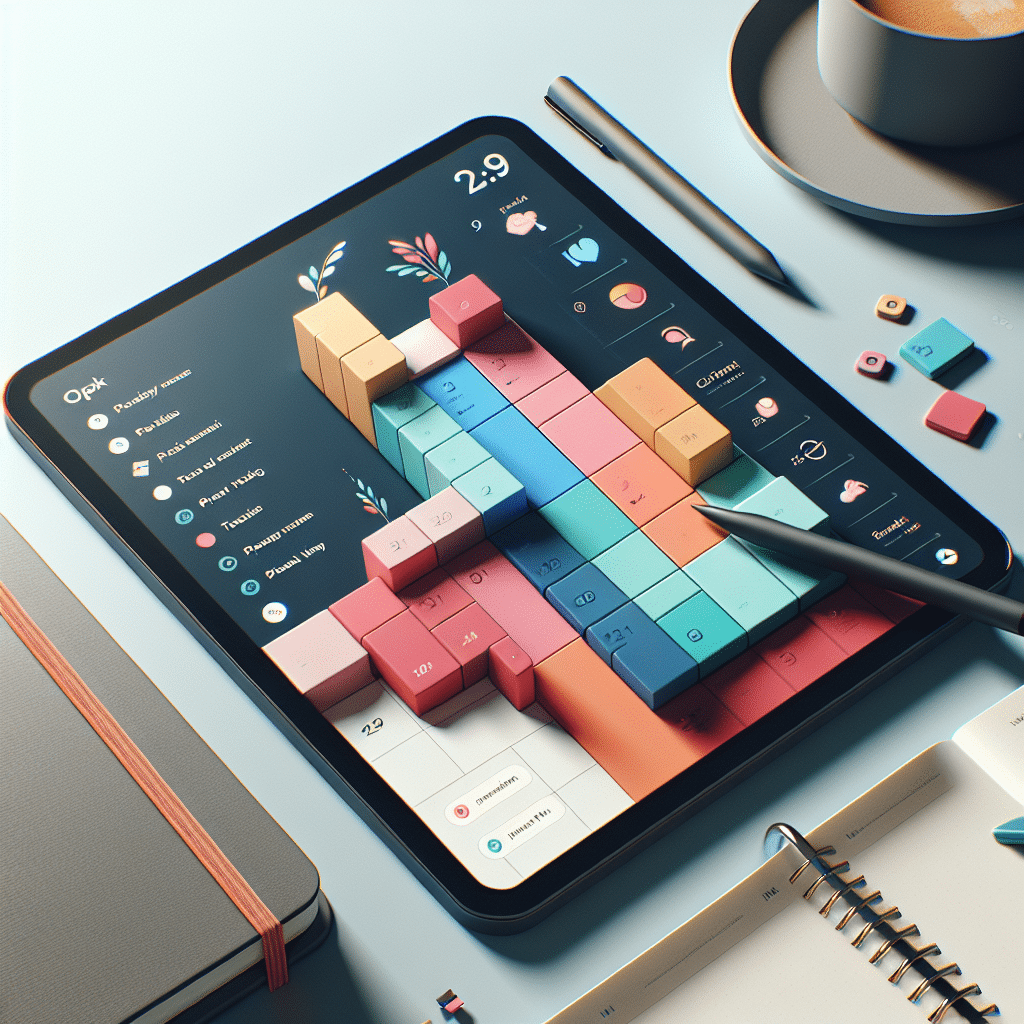Crafting a Productive Digital Daily Planner: Tips and Tricks
1. Understanding the Basics of a Digital Daily Planner
A digital daily planner is an application or software used to organize tasks, appointments, and events. Unlike traditional planners, digital planners are versatile and can be customized to suit individual needs. They can often sync across devices, making it easy to access your planning tools anytime, anywhere.
2. Choosing the Right Digital Planner Tool
When selecting a digital planner, consider these factors:
- Compatibility: Ensure the planner syncs across all your devices. Popular options include Notion, Trello, Todoist, and Google Calendar.
- User Interface: Look for a visually appealing design that makes navigation simple.
- Features: Determine which features are essential for you, such as task priority settings, reminders, or collaboration tools.
3. Setting Up Your Planner
Once you’ve selected your tool, setting up your planner efficiently is crucial:
- Create Different Sections: Organize sections for daily tasks, weekly goals, monthly overview, and notes. This facilitates easy navigation.
- Utilize Color-Coding: Use different colors for various categories (work, personal, health) to enhance visual appeal and quickly locate tasks.
- Include a Habit Tracker: Design a section to monitor daily habits (e.g., water intake, exercise). This promotes accountability and enhances productivity.
4. Establishing Daily and Weekly Routines
Routines are essential for productivity. Establishing consistent daily and weekly routines can enhance focus and efficiency:
- Morning Review: Start each day with a review of your goals and tasks. This visual reminder prioritizes what needs to be accomplished.
- Evening Reflection: Dedicate time to assess what was done, what can be improved, and plan for the next day.
- Weekly Planning Session: Dedicate time each week to strategize about larger goals, deadlines, and adjust your tasks accordingly.
5. Prioritizing Your Tasks
Using a priority matrix helps decide which tasks need immediate attention:
- The Eisenhower Box: Divide tasks into four categories: urgent and important, important but not urgent, urgent but not important, and neither.
- Daily Top 3: Select three main tasks each day that align with your long-term goals to maximize daily productivity.
6. Incorporating Time Blocking
Time blocking is an effective method to allocate specific time slots for tasks:
- Calibrate Your Schedule: Recognize your peak working hours and plan challenging tasks during these windows.
- Break Tasks into Blocks: Instead of a vague “work on project,” assign a specific time block (e.g., 1 PM – 2 PM for research).
- Buffer Time: Leave short breaks between tasks to foster creative thinking and avoid burnout.
7. Leveraging Reminders and Notifications
Set reminders strategically to reinforce task completion:
- Use Timely Alerts: Schedule alerts just before a task to prepare mentally and manage transitions efficiently.
- Recurring Reminders: For regular tasks (like exercise or weekly reviews), set recurring reminders to automate part of your planning.
8. Tracking Progress and Adjusting Goals
Incorporate systems to track your progress effectively:
- Daily Checklists: Maintain a checklist to mark off completed tasks for a sense of achievement and motivation.
- Monthly Review: Analyze monthly progress regarding set goals. Adjust strategies and set new targets aligned with your overall objectives.
- Reflection Notes: Regularly jot down insights or challenges faced. This encourages growth and helps troubleshoot obstacles in your workflow.
9. Staying Flexible
Adaptability plays a critical role in a productive digital planner:
- Be Open to Change: Sometimes, tasks may need to move around. Adjust your plans as environments or priorities shift.
- Experiment with Features: Don’t hesitate to try a new digital tool or planning style if the current method isn’t yielding results.
10. Collaborating and Sharing
If collaboration is essential, utilize the sharing features:
- Team Planning: Use tools like Google Calendar or Trello for shared project management. This keeps everyone on the same page.
- Delegation: Assign tasks to team members directly in your planner, ensuring clear accountability.
11. Personalizing Your Planner
The aesthetic and functional personalization of your digital planner can enhance engagement:
- Incorporate Visuals: Utilize graphics, images, or doodles that resonate with you personally to inspire creativity and keep your planning exciting.
- Custom Templates: Design or download templates that reflect your personal style or the essence of your goals for motivational bursts.
12. Evaluating the Effectiveness
Consistently evaluate your productivity levels and planner effectiveness:
- Feedback Loop: After significant periods, assess what features work and which do not; adjust functionalities based on personal effectiveness.
- Community Engagement: Join forums or online communities centered around digital planning for ideas, shortcuts, and inspiration.
13. Maintaining Work-Life Balance
A digital planner can also help uphold life balance by scheduling time for leisure:
- Block Out Downtime: Just as you schedule work tasks, block out family time, hobbies, and relaxation periods to ensure a well-rounded life.
- Mindfulness Activities: Use planners to incorporate mindfulness activities like meditation or reading time to support mental health.
14. Leveraging Integrations
Integrate additional tools and services to maximize productivity:
- Calendar Syncing: Connect your planner with calendars (Google Calendar or Outlook) to keep track of appointments seamlessly.
- Task Management Tools: Use integrations with task management apps like Zapier to enhance overall task management.
15. Keeping It Intuitive
Lastly, always keep efficiency and usability in mind:
- Simplify Navigation: Avoid excessive complication in task organization. Opt for a clean layout that prioritizes usability.
- Regular Updates: As digital tools evolve, stay informed about updates to maintain the efficiency of your planning approach.
Each of these strategies contributes to creating a highly productive digital daily planner, customized to your specific needs and lifestyle, ultimately helping you achieve your personal and professional goals efficiently.
